First, let's get adults active. Active Learning: What About This? Summit

Toru Oyama
DENTSU SOKEN INC.'s 'Active Learning: What About This? Research Institute' held its first event, the 'What About This? Summit,' at Dentsu Hall on March 5.
This event welcomed participants from various fields across Japan, including elementary and junior high school faculty, education-related companies, and students. We present a special serialized edition covering the event.
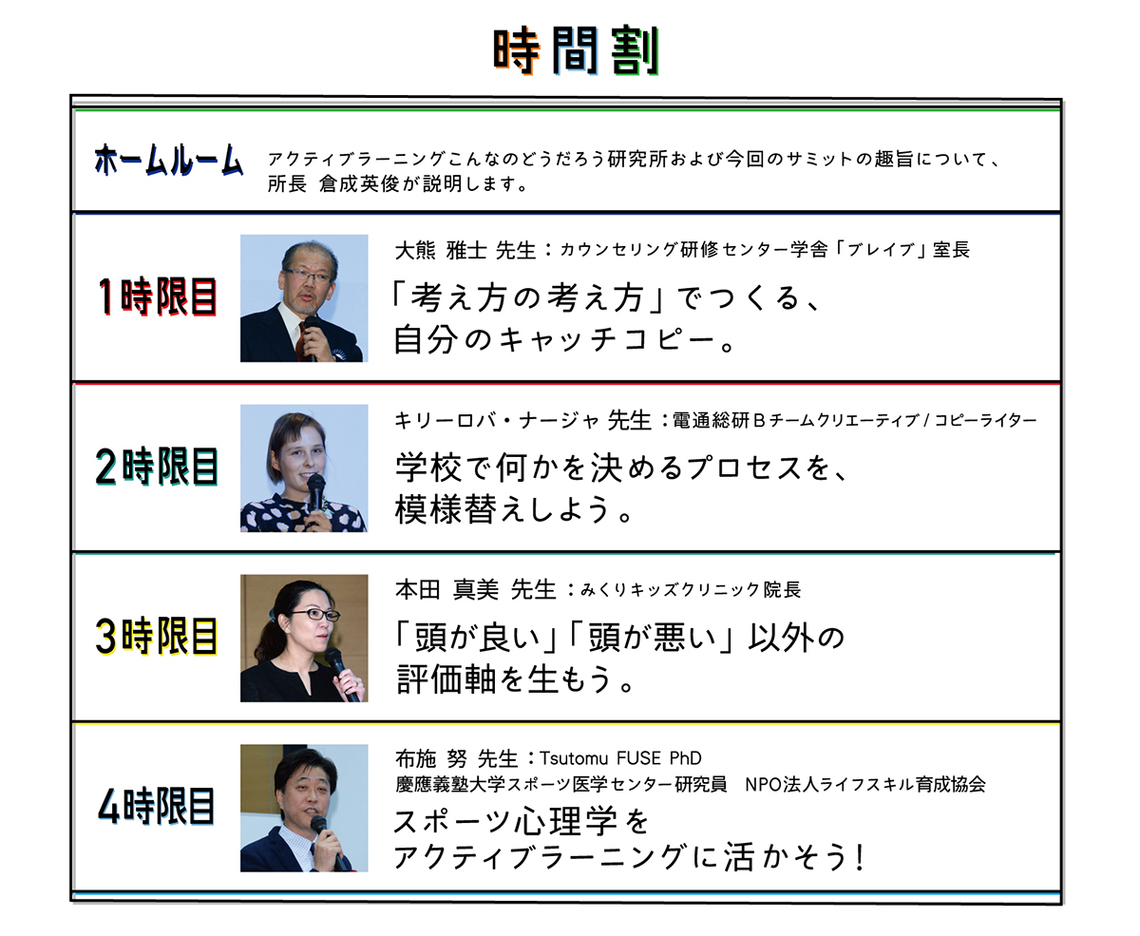
Be active where you can
This summit identified "active adults" as key to pursuing education without fixed answers. Instead of a one-way seminar format clearly separating lecturers and attendees, it adopted a class format where both teachers and students could be active. During breaks, ICT-related companies presented the latest ICT applications in education at exhibition booths.
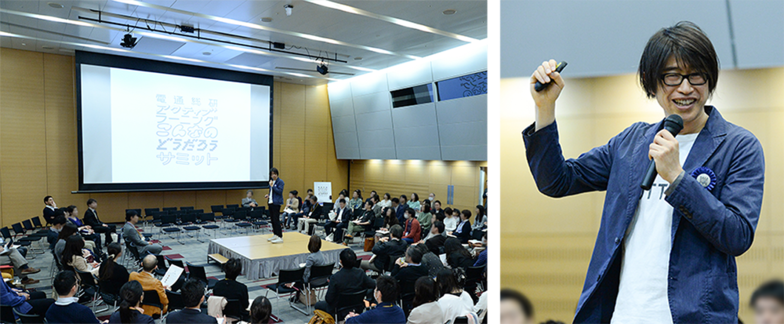
To maximize active participation wherever possible, following the approach in researcher Nadezhda Kirillova's column "Seating Systems in Elementary Schools Across 5 Countries: They're Actually All Different," we asked each teacher to design a seating arrangement suited to their specific lesson.
For example, Director Hidetoshi Kuranari deliberately chose a layout where he stood in the center, surrounded by seats, to strongly emphasize from the outset that this was not a typical seminar. Nadezhda's class used the British roundtable format. By incorporating "What About This?" throughout the entire summit, we aimed to create an event unconstrained by conventional seminar formats.
Experiencing active learning through thought processes and decision-making processes
First, as a "What about this?" experiment, we held two mock active learning sessions.
The first session was a lesson on creating personal catchphrases led by Professor Masashi Okuma, a collaborator on the "Advertising Elementary School" project. Using the "Advertising Elementary School" teaching material "How to Think," students developed their own catchphrases following steps like "divergence," "convergence," and "concept creation." Through this lesson on how to approach copywriting, we had the children experience not just being told to think, but how to effectively teach the process of "thinking."
The second session featured a new workshop: Researcher Naja's "Deciding the School Trip Destination." This workshop wasn't just about picking a destination and ending there. Each group drew cards from a decision-making process deck placed on their table, following the instructions on each card to ultimately decide their school trip destination.
There are 12 types of cards in total. Words like "table-flipping" and "campaign speech" are written on them. For example, if someone draws the "table-flipping" card, they must make a statement that overturns a previously proposed idea. The person with the "campaign speech" card must give a speech supporting their favorite idea from those already proposed. Drawing these cards forces them into a chaotic decision-making process unlike anything seen in a normal decision-making flow.
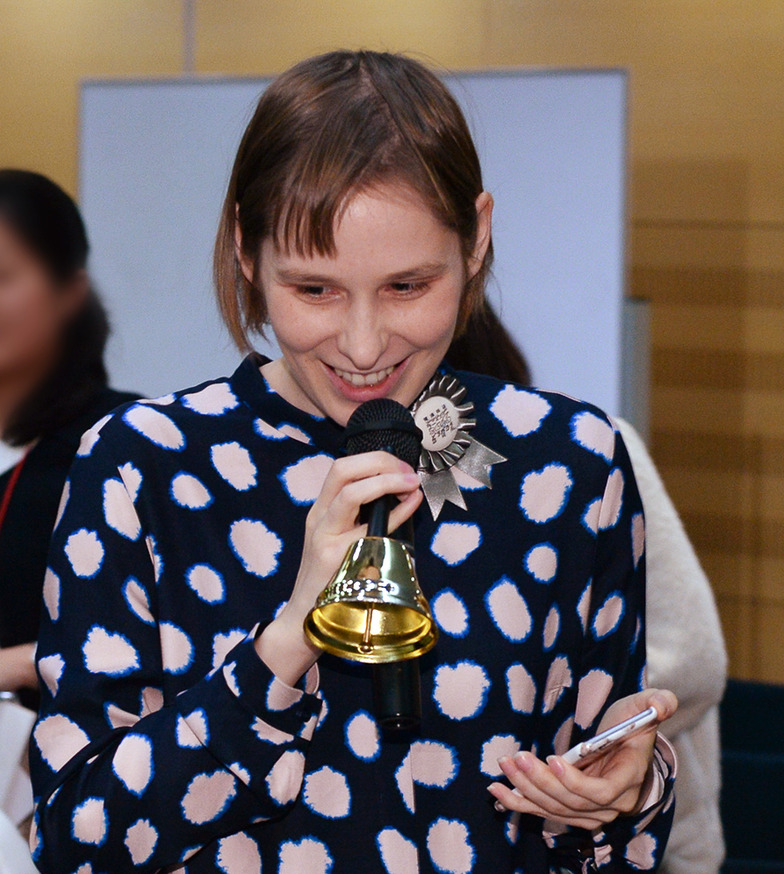
Is your cognitive style visual dominant? Verbal dominant? Auditory dominant?
B. By the text on their business card
C. I remember by the sound of their name
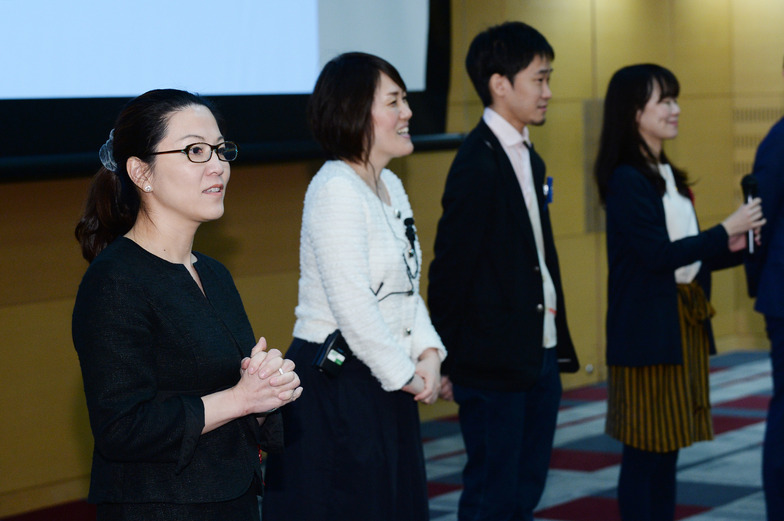
"Active learning is all the rage, but it's crucial for teachers to understand that children with different characteristics might be in this class. I'm not an educator, but I really hope teachers will consider children's characteristics when structuring their lessons," (Professor Honda)
"Concentration" and "discussion" – even these themes can be approached through active learning.
Professor Tsutomu Fuse's class, which explored active learning from a sports psychology perspective, was also highly active. On the summit day, a group of 30 people met for the first time. First, they did an activity: "How quickly can you line up in birthdate order?" After lining up, everyone gathered to discuss how they could do it faster. From their discussion, they hypothesized that appointing a leader to give instructions would allow them to line up more quickly.
Next, they tried "how quickly they could line up in alphabetical order by name." This way, discussing to set goals and hypotheses connects to active learning in sports psychology.

"In sports psychology, concentration is the ability to set a specific focus point. By clarifying what to focus on, athletes can list several possible next actions and choose the correct one. Since this needs to be shared with the entire team, discussion becomes extremely important," (Professor Fuse)
No single answer? Or is everything an answer?
This summit featured a packed agenda, including a simulated active learning class, understanding children with diverse cognitive characteristics, and communication skills from a sports psychology perspective, all explored with the mindset of "What about this?" Finally, reflecting on the day, Professor Okuma shared his comments.
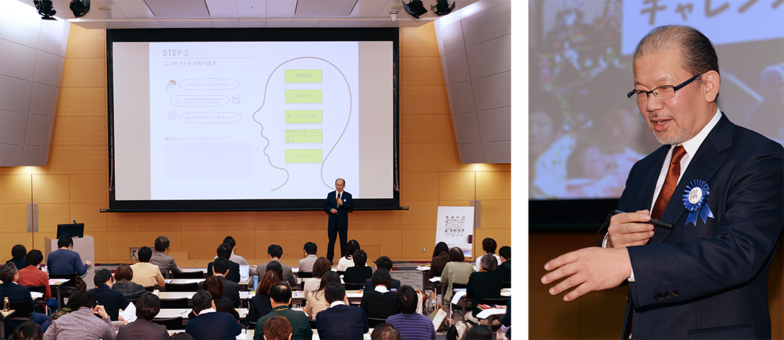
"The catchphrase for this summit was, 'No answers? Or are all answers valid?'
Traditional education often involved teachers preparing or expecting the correct answers, then having students search for them through trial and error. As a teacher myself, I used to teach that way.
Regardless of the method, repeating this approach may not foster the motivation to take on new challenges when entering society. I believe that to thrive in a rapidly changing world, it is crucial for children to boldly tackle problems without clear answers and accumulate experiences overcoming them. This kind of learning is precisely the active learning that cultivates versatile abilities applicable in society.
Reflecting on the four lessons from this summit, I believe several key elements emerged.
Turning unease into a challenge: Honestly acknowledging the emotions welling up within oneself and recognizing them as a challenge.
Making challenges personal and solving them: Addressing problems by starting with what you can do now, without shifting responsibility to others.
Transforming the OS (learning process) to enable this learning: Attempting to solve problems alongside children, free from the constraints of traditional learning processes.
I felt these "What about this?" essences were scattered throughout each lesson. I look forward to encountering everyone's own "What about this?" at the second summit scheduled for autumn.
While this series has been very well received, the nature of media inevitably makes it feel somewhat one-sided. We would greatly appreciate your opinions, inquiries, or feedback via email (dii@dentsu.co.jp). We will also share the latest updates on our Facebook page ( https://www.facebook.com/dentsu.active.learning/ ). Thank you for your continued support.
Was this article helpful?
Newsletter registration is here
We select and publish important news every day
For inquiries about this article
Back Numbers
Author

Toru Oyama
Dentsu Inc. B Team / Active Learning "What About This?" Research Institute. Leveraging advertising creative skills honed as a copywriter, currently engaged in diverse and enjoyable activities including new ventures, corporate training, and workshops. Launched "PLAY FIRST," a design unit developing games and educational tools based on the concept of "starting with play." Specializes in designing play and projects by working backward from the ideal experience. Left Dentsu Inc. in March 2023.